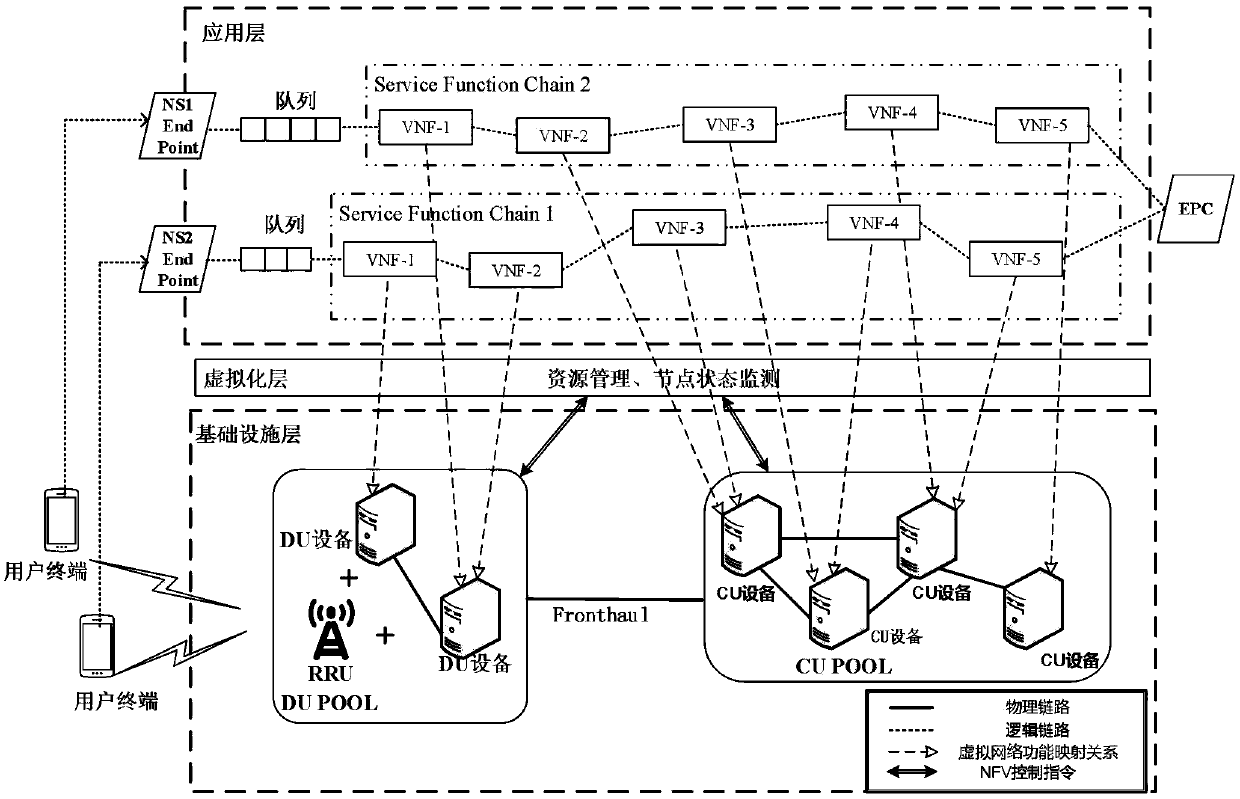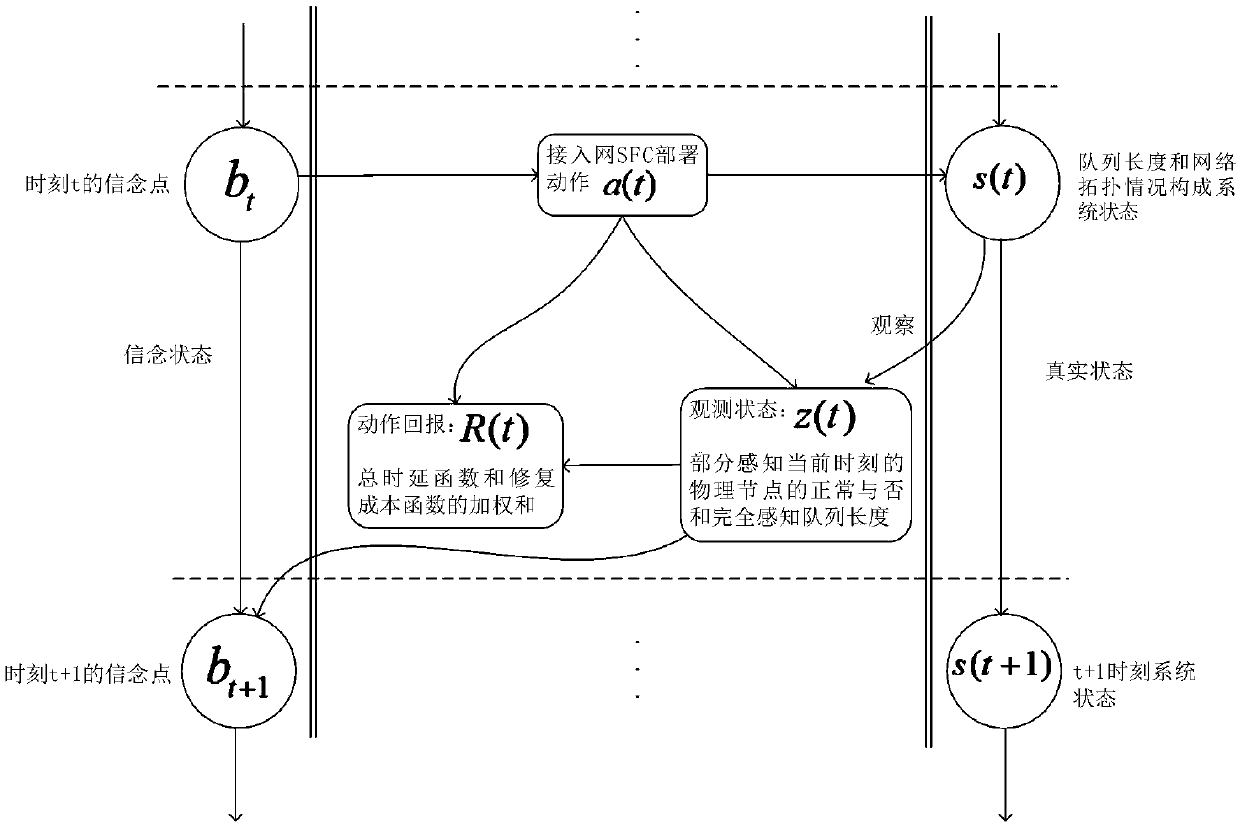Access network service function chain deployment method based on random learning
A service function chain and access network technology, applied in network planning, electrical components, wireless communication, etc., can solve problems such as low resource utilization, high delay, and inability to guarantee QoS in real time
- Summary
- Abstract
- Description
- Claims
- Application Information
AI Technical Summary
Problems solved by technology
Method used
Image
Examples
Embodiment Construction
[0052] The preferred embodiments of the present invention will be described in detail below with reference to the accompanying drawings.
[0053] figure 1 It is a schematic diagram of a scene where the present invention can be applied. Both CU and DU devices use general-purpose servers to realize protocol layer function virtualization, and form DU pools and CU pools respectively, and perform data communication between the two through NGFI. Under uplink conditions, different slices can flexibly deploy SFC VNFs according to service requirements, such as figure 1 VNF1 of SFC2 in slice 1 is deployed in the DU pool, and SFC1 of slice 2 deploys both VNF1 and VNF2 in the DU pool, and the rest are instantiated in the CU pool. Considering the caching function of the access network at the same time, each SFC has a queue on the DU side.
[0054] figure 2 It is the access network VNF deployment mode in the present invention. In the C-RAN architecture under uplink conditions, the SFC...
PUM
 Login to View More
Login to View More Abstract
Description
Claims
Application Information
 Login to View More
Login to View More - R&D
- Intellectual Property
- Life Sciences
- Materials
- Tech Scout
- Unparalleled Data Quality
- Higher Quality Content
- 60% Fewer Hallucinations
Browse by: Latest US Patents, China's latest patents, Technical Efficacy Thesaurus, Application Domain, Technology Topic, Popular Technical Reports.
© 2025 PatSnap. All rights reserved.Legal|Privacy policy|Modern Slavery Act Transparency Statement|Sitemap|About US| Contact US: help@patsnap.com



